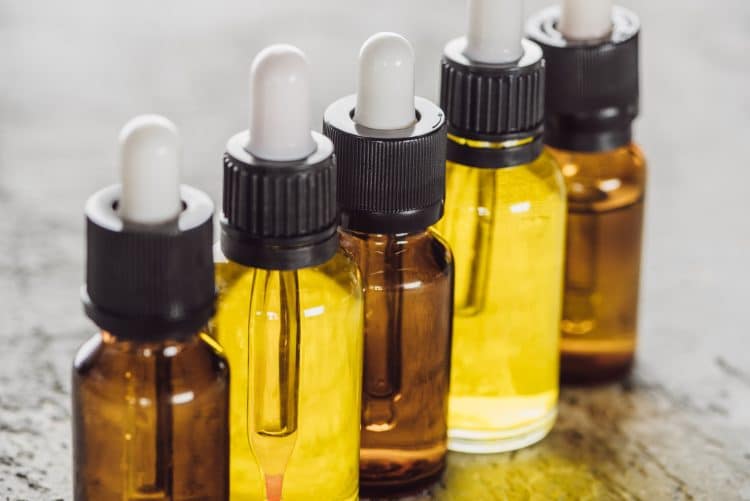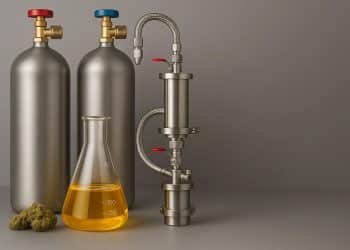Cannabimimetics or what is known as “non classical” cannabinoids have become a widespread area of desired research for unknowing public consumption. Through the passing of several worldwide laws that allow the cultivation and extraction of CBD (Cannabidiol) from the Hemp plants have become a billion-dollar industry. With laboratories working faster than lawyers in many places, the proliferation of non-organic and potentially health threatening derivatives have come to the shelves.
For those fighting chronic medical illness, the lack of research completed on the concentration of these non-natural compounds can put the consumer in danger from the unknown side effects of solvents and secondary elemental reactions.
Synthetic Cannabinoids or “Syncans” are cannabinoids of which are synthesized by man and do not occur in nature. These substances are designed to mimic cannabinoids in terms of interaction with cannabinoid receptors thus inducing similar effects.
Their molecular structure does not necessarily look like that of tetrahydrocannabinol (THC) derived from a plant, they can be synthesized in the lab in large quantities and without waiting the habitual time to accumulate naturally in plant trichomes.
This has become a reliable source of mass income for some massive Hemp and CBD manufacturers, opening doors to a plethora of unregulated products that wind through the cracks and loopholes of federal prohibition.
This has effectively made a game of illegitimate documentation and lab testing results that border on fraudulent. With chemists seemingly smarter than lawyers, they continue to synthesize and isolate new cannabinoids to commerce upon, while political reviews struggle to keep up with the science.
Through processes such as chemical extraction the compounds are separated and isolated then being used to synthesize loophole cannabinoids chemically. On shelves where CBD products are often sold, being seen is a cornucopia of alternative cannabinoid products with inflated THC potencies.
These are made by adding back together what was separated and isolated, creating a higher potency mixture that is then added to edibles and consumables for commerce. In this way, the liver — being the organ that naturally metabolizes THC into 11-hydroxy-THC (11-OH-THC) — can result in more intense highs and effects, which can sometimes be overpowering for the patient or consumer.
The use of acids in the creation of synthetic cannabinoids can reduce the ability to achieve a full spectrum effect compared to natural cannabis extracts.
What is THC-O and Why Poses Concerns
THC-O acetate is among the class of synthetic cannabinoids, non occurring in nature. The inclusion of THC-O in cannabis products is debated both in cultural and legal pursuits due to its unpredictable effects on consumption. It has been studied to have 4 times the high of the naturally occurring psychotropic counterpart. [2] This compound is commonly synthesized through acetylation, starting from THC isomers and using compounds like acetic anhydride while refluxing. [2], [3]
THC-O was studied, among various chemical agents, as a potential military weapon in a US government project called the Edgewood Arsenal. The experiments took place between the 1940 and 1970 and THC-O was proven to induce cognitive impairment and produce ataxia which is a lack of voluntary muscle coordination. [5]
Reports have been filed in many countries documenting the hallucinations and erratic behavior of some that have consumed these man-made cannabinoids. With effects reaching levels similar to that of LSD and major hallucinogens, it’s important to understand the risks associated with these synthetic cannabis derivatives, which are often lacking rigorous controls on manufacturing procedures, solvent residues and long-term effects. [4]
In present manufacturing, many tests confirm that there are less than 1% of the original plant compound remaining in most widely sold products. [2]
Lack of homogeneity in mixtures and inconsistent development of infusion methods contribute to the creation of large batches of unregulated and inconsistent products. These products may be sold over the counter due to a lack of verified knowledge and regulatory oversight.
Test results and laboratory certifications, such as Certificates of Analysis (COAs), are sometimes found to be fraudulent. Variability in testing procedures, material processes, and potential manipulation of documentation for financial gain further exacerbate the problem posing serious concern in the world of cannabis infused products. Laboratory testing has become a critical risk management point, highlighting the need for improved oversight and consistent verification in the industry.
A recent study published in 2023 alerts the public health community about the presence of Δ8-THC-O acetate in commercially available vaping products, posing a serious risk for pulmonary toxicity. It is important to remember that in 2019 an epidemic of severe lung injury associated with the use of electronic cigarettes occurred, leading to 2087 hospitalizations in the USA and many deaths.
This is thought to be caused primarily by the inhalation of vitamin E acetate (VEA). This epidemic was called E-cigarette or vaping product use–associated lung injury (EVALI). Enhanced scrutiny and regulation of vaping products, including those containing synthetic cannabinoids, are essential to safeguard against potential health risks and prevent future outbreaks of related illnesses. [4]
Wrap Up on Cannabimimetics
It is always important to pay attention to the label, and ask for the CoA reporting the place in which the batch was produced and the name of the third party lab testing that particular product. If you are buying a blended product, not of natural origin, the fewer ingredients the better. This will ensure an experience that is more focused on health and wellness and less risks will be at play with the outcome.
When choosing products made out of solvent extraction, it is recommended to take time to check the product origin and research the presence of additives. Always research the products that you are choosing to consume. This is a necessary step in cannabis in order to ensure safety and quality, especially as research on cannabimimetics progresses and legislation evolves.
References:
- Holt AK, Poklis JL, Peace MR. ∆8-THC, THC-O Acetates and CBD-di-O Acetate: Emerging Synthetic Cannabinoids Found in Commercially Sold Plant Material and Gummy Edibles. J Anal Toxicol. 2022 Oct 14;46(8):940-948. doi: 10.1093/jat/bkac036. PMID: 35674405; PMCID: PMC9564187.
- Davidson C, Opacka-Juffry J, Arevalo-Martin A, Garcia-Ovejero D, Molina-Holgado E, Molina-Holgado F. Spicing Up Pharmacology: A Review of Synthetic Cannabinoids From Structure to Adverse Events. Adv Pharmacol. 2017;80:135-168. doi: 10.1016/bs.apha.2017.05.001. Epub 2017 Jun 20. PMID: 28826533.
- Kruger DJ, Amila K, Kaplan SM, Redfield J, Stacy T, Agarwal V, Faqqouseh M, Bone CC. A Content Analysis of Social Media Discussions on THC-O-Acetate. Cannabis. 2023 Jul 5;6(2):13-21. doi: 10.26828/cannabis/2023/000164. PMID: 37484050; PMCID: PMC10361800.
- Benowitz NL, Havel C, Jacob P, O’Shea DF, Wu D, Fowles J. Vaping THC-O Acetate: Potential for Another EVALI Epidemic. J Med Toxicol. 2023 Jan;19(1):37-39. doi: 10.1007/s13181-022-00921-3. Epub 2022 Dec 12. PMID: 36508081; PMCID: PMC9813278.
- https://www.cia.gov/readingroom/docs/CIA-RDP96-00788R001500160012-7.pdf












